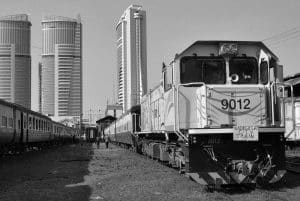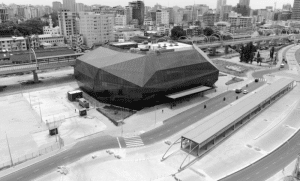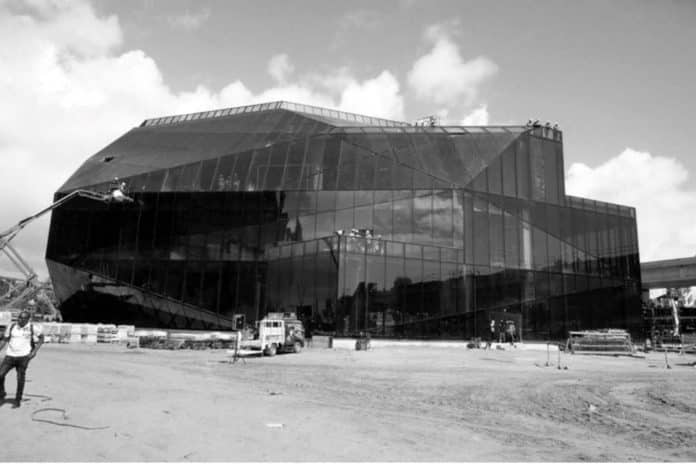Introduction to Dar es Salaam
Dar es Salaam, the vibrant commercial hub of Tanzania, has long been the epicenter of the country’s economic and social progress. As the largest city and port, Dar es Salaam has played a pivotal role in shaping the nation’s transportation landscape. Dar es salaam in recent years, this dynamic metropolis has been at the forefront of a remarkable transformation, driven by the ambitious Standard Gauge Railway (SGR) project.
The Importance of Railways in Tanzania

Tanzania’s reliance on an efficient transportation network has been a crucial factor in its economic development. Railways, in particular, have been the backbone of the country’s logistics infrastructure, connecting various regions and facilitating the movement of goods and people. As Tanzania continues to grow, the need for a modern, reliable, and expansive railway system has become increasingly evident.
The Evolution of Railways in Dar es Salaam
Dar es Salaam’s railway history can be traced back to the late 19th century, when the first narrow-gauge railway line was constructed to connect the city with the hinterland. Over the decades, the railway network in Dar es Salaam has undergone various phases of expansion and modernization, reflecting the city’s evolving transportation needs.
The Standard Gauge Railway (SGR) Project in Dar es Salaam
The Standard Gauge Railway (SGR) project in Dar es Salaam represents a transformative leap forward in Tanzania’s railway infrastructure. This ambitious initiative, launched in 2017, aims to replace the aging narrow-gauge system with a modern, high-speed rail network that can accommodate larger cargo volumes and faster passenger services.
Key Features of the SGR Project in Dar es Salaam:
- Gauge Conversion: The SGR project involves the conversion of the existing narrow-gauge railway lines to a standard gauge, which is the internationally recognized standard for modern rail systems.
- Increased Capacity: The new standard gauge railway lines are designed to handle significantly higher cargo and passenger volumes, addressing the growing transportation demands of Dar es Salaam and the surrounding regions.
- Improved Speed and Efficiency: The SGR system is equipped with state-of-the-art technology, enabling higher train speeds and more efficient transportation of goods and people.
- Multimodal Integration: The SGR project is being integrated with other modes of transportation, such as roads and ports, to create a seamless and efficient multimodal logistics network.
Benefits of the SGR for Dar es Salaam
The implementation of the Standard Gauge Railway in Dar es Salaam promises to deliver a host of benefits for the city and the nation as a whole:
- Enhanced Connectivity: The SGR will significantly improve the connectivity between Dar es Salaam and other major cities in Tanzania, as well as neighboring countries, fostering greater economic integration and trade opportunities.
- Improved Cargo Handling: The increased capacity and efficiency of the SGR will streamline the movement of goods through Dar es Salaam’s port, reducing congestion and enhancing the city’s role as a regional logistics hub.
- Faster Passenger Transport: The high-speed SGR trains will provide a more comfortable and reliable means of transportation for commuters and travelers, reducing journey times and improving overall mobility.
- Environmental Benefits: The shift from road-based transportation to the more energy-efficient rail system will contribute to a reduction in greenhouse gas emissions and a lower environmental impact.
- Economic Stimulus: The SGR project has already generated significant employment opportunities during the construction phase and is expected to drive further economic growth and development in Dar es Salaam and the surrounding regions.
Impact of the SGR on Transportation and Trade in Tanzania

The Standard Gauge Railway project in Dar es Salaam is poised to have a transformative impact on Tanzania’s transportation and trade landscape. By enhancing the efficiency and capacity of the country’s logistics infrastructure, the SGR is expected to:
- Reduce the cost and time of transporting goods, making Tanzanian exports more competitive in global markets.
- Facilitate the seamless movement of raw materials and finished products, supporting the growth of various industries.
- Improve the connectivity between Dar es Salaam’s port and the hinterland, strengthening the city’s position as a regional trade hub.
- Encourage the development of new industrial and commercial zones along the SGR corridor, fostering economic diversification and job creation.
Challenges Faced During the SGR Project in Dar es Salaam
The implementation of the Standard Gauge Railway project in Dar es Salaam has not been without its challenges. Some of the key obstacles faced during the project’s development include:
- Land Acquisition and Resettlement: The construction of the SGR required the acquisition of substantial amounts of land, leading to complex negotiations with affected communities and the need for comprehensive resettlement programs.
- Financing and Budgetary Constraints: The SGR project is a capital-intensive undertaking, and securing the necessary funding from both domestic and international sources has been a significant challenge.
- Coordination and Stakeholder Management: Effectively coordinating the various stakeholders, including government agencies, private sector partners, and local communities, has been crucial to the project’s success.
- Technical Complexities: The conversion of the existing narrow-gauge railway system to a standard gauge has required extensive technical planning and the implementation of specialized engineering solutions.
- Environmental and Social Considerations: The project has had to navigate various environmental and social impact assessments, ensuring that the development of the SGR is sustainable and respectful of local communities.
Future Developments and Expansions of the Railway Network in Dar es Salaam
The Standard Gauge Railway project in Dar es Salaam is just the beginning of a broader vision for Tanzania’s railway network. The government has outlined plans for further expansions and enhancements of the SGR system, including:
- Extending the SGR network to connect Dar es Salaam with other major cities, such as Mwanza, Kigoma, and Mtwara, creating a nationwide integrated rail system.
- Exploring the possibility of connecting the Tanzanian SGR network with those of neighboring countries, such as Kenya and Zambia, to enhance regional integration and trade.
- Investing in the modernization and upgrade of existing railway infrastructure, including the rehabilitation of older narrow-gauge lines, to ensure a comprehensive and efficient rail network.
- Integrating the SGR with other modes of transportation, such as roads, airports, and ports, to create a seamless multimodal logistics ecosystem.
How the SGR is Transforming Dar es Salaam into a Modern City
The implementation of the Standard Gauge Railway project is not just a transportation initiative; it is a catalyst for the transformation of Dar es Salaam into a modern, vibrant, and livable city. The SGR’s impact on the urban landscape can be seen in the following ways:
- Urban Renewal: The construction of the SGR has led to the redevelopment of various areas in Dar es Salaam, with the creation of new commercial hubs, residential neighborhoods, and public spaces.
- Improved Accessibility: The enhanced connectivity provided by the SGR has made it easier for people to access different parts of the city, reducing congestion and improving overall mobility.
- Economic Diversification: The SGR has spurred the growth of new industries and businesses, diversifying Dar es Salaam’s economic base and creating employment opportunities.
- Sustainable Development: The SGR’s focus on energy-efficient and environmentally-friendly transportation solutions aligns with the city’s broader sustainability goals, contributing to a greener and more livable urban environment.
- Cultural Transformation: The SGR project has also sparked a cultural shift, as Dar es Salaam’s residents embrace the convenience and modernity of the new rail system, fostering a sense of civic pride and a renewed vision for the city’s future.
Conclusion: Dar es Salaam’s Journey Towards a Modern Rail Revolution
Dar es Salaam’s transformation through the Standard Gauge Railway project is a testament to Tanzania’s commitment to modernizing its transportation infrastructure and positioning the country as a regional economic powerhouse. The SGR’s impact on Dar es Salaam’s connectivity, logistics efficiency, and overall urban development has been profound, paving the way for a future where the city’s role as a hub of progress and innovation is firmly cemented.
For more articles related to Railway and train travel Tanzania, click here!

































